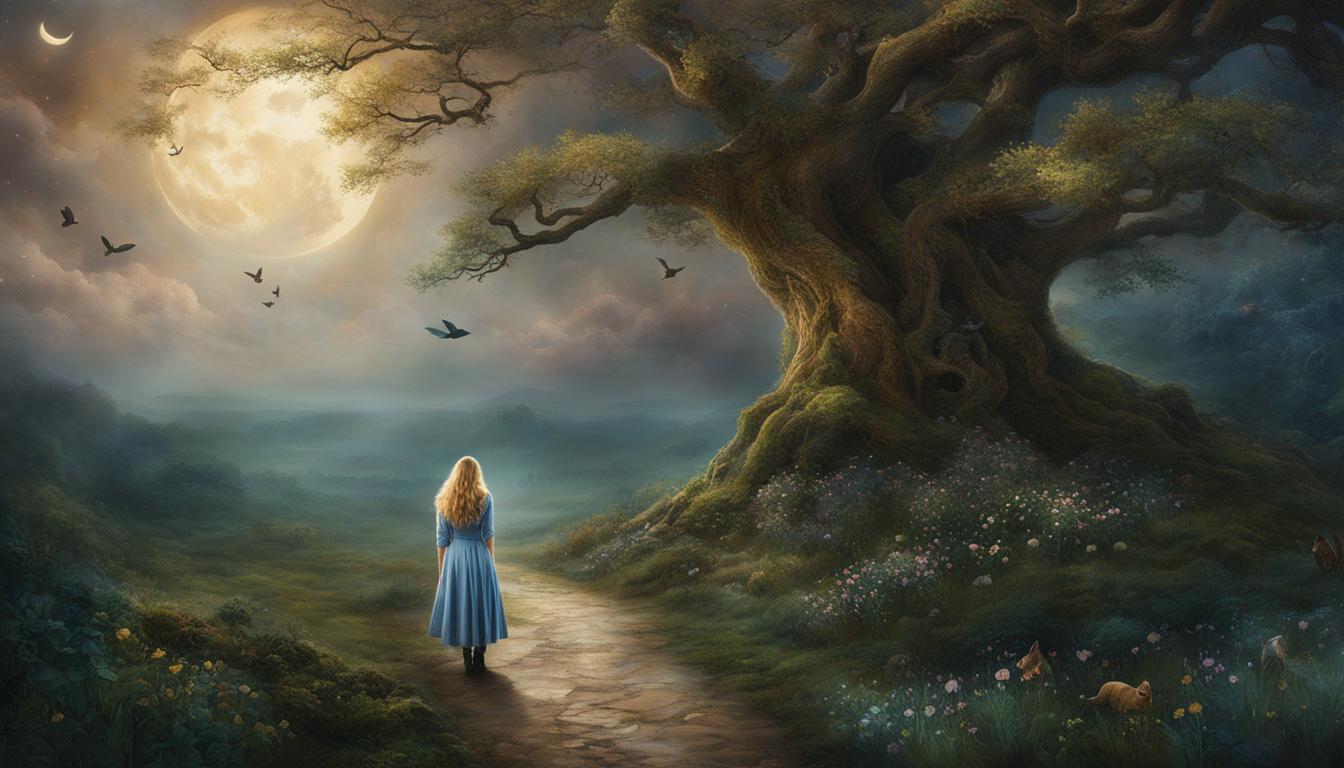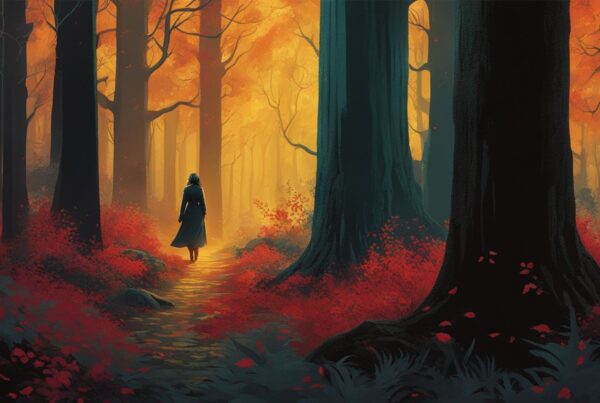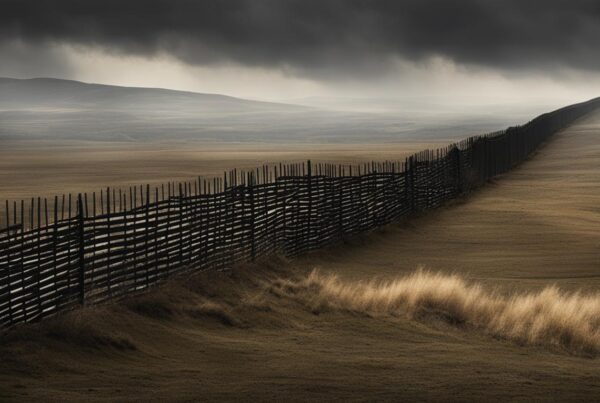If you’re a fan of Alice Hoffman’s writing style, you won’t be disappointed with her latest audiobook, “The World That We Knew.” In this comprehensive review, we delve into the story’s plot, characters, historical context, and more. Whether you’re a longtime fan of Hoffman’s work or a newcomer to her prose, read on for our thoughts on this haunting and beautiful tale.
About the Author
Alice Hoffman, born March 16, 1952, is a celebrated American novelist whose works have been published in more than 20 languages. She is the author of numerous best-selling books, including “Practical Magic,” “The Dovekeepers,” and “The World That We Knew.”
Hoffman grew up in Franklin Square, New York, and attended Adelphi University, where she earned a Bachelor of Arts in English. She went on to receive a Master of Arts in creative writing from Stanford University in 1975.
Throughout her career, Hoffman has received critical acclaim for her unique storytelling abilities and vivid characters, winning numerous awards such as the New England Book Award, the Massachusetts Must-Read Book Award, and the National Jewish Book Award. She currently lives in Boston and New York with her family.
Plot Summary
In “The World That We Knew” audiobook, Alice Hoffman weaves a compelling story set against the backdrop of World War II. At its core, the book is a tale of love, loss, and the unwavering strength of the human spirit.
The story starts in Berlin in 1941, where a young Jewish girl named Lea’s life is in grave danger due to the Nazi regime’s persecution of Jews. Lea’s mother, Hanni, is desperate to save her daughter’s life and turns to a rabbi’s daughter, Ettie, for help. Ettie creates a mystical creature, a golem, named Ava, who can protect Lea and guide her towards safety. The three embark on a journey across war-torn Europe, encountering numerous dangers along the way.
The plot unfolds through the lens of various characters who all have unique perspectives on the war. From Lea, who is only a child but has to navigate the harsh realities of life in wartime, to Ava, who grapples with her newfound humanity and the emotions that come with it, to Julien, a French Resistance fighter trying to make a difference in the war-torn world.
Hoffman’s writing captures the complexity and nuance of life during wartime, delving into the themes of love, sacrifice, and resilience. As the story progresses, the stakes get higher, and each character faces significant challenges that shape their journey in unexpected ways.
The audiobook’s plot is a testament to the human spirit’s triumph over adversity and a timeless reminder of the power of hope in the darkest of times.
Historical Context
The historical context of “The World That We Knew” plays a significant role in shaping the story. Set in France and Germany during World War II, the novel vividly depicts the horrors of the Holocaust and the persecution of the Jewish people.
The Nazis’ rise to power and their anti-Semitic policies are well-documented, and Hoffman effectively weaves them into the story, highlighting the struggles of the main characters. In particular, she vividly portrays the terror and uncertainty that Jewish families faced as they tried to flee persecution and find safety.
Additionally, the historical context provides a rich backdrop for exploring themes of survival and resilience, love and sacrifice, and the power of hope in the face of fear and oppression.
Themes and Motifs
“The World That We Knew” explores several themes and motifs that intertwine throughout the story, highlighting the complex and emotional journey of the characters.
Love and Sacrifice
The theme of love and sacrifice is central to the story, as characters face impossible choices between their personal desires and the greater good. For example, Lea must leave her family to protect herself, while Ava chooses to leave her divine powers behind to experience human emotions and love.
Loss and Grief
The novel also delves into the devastating impact of loss and grief, as characters are torn apart by war, violence, and death. The pain of separation and the lasting trauma of war are palpable throughout “The World That We Knew,” adding realism and depth to the narrative.
Resilience and Survival
Despite the darkness and despair of war, the characters in “The World That We Knew” cling to hope and resilience, showcasing the power of the human spirit to overcome adversity and hardship. The journey of these characters highlights the human instinct for survival and the importance of holding on to hope, even in the bleakest of circumstances.
The Power of Faith
Throughout the novel, the power of faith – both religious and spiritual – is a recurrent motif that is explored through different characters. The role of faith in providing comfort, guidance and a sense of purpose is evident, as characters grapple with difficult questions of belief in the face of adversity.
| Themes | Motifs |
|---|---|
| Love and Sacrifice | Freedom and Bondage |
| Loss and Grief | The Supernatural |
| Resilience and Survival | Religion and Spirituality |
| The Power of Faith | The Journey |
Narrative Style
Alice Hoffman is a prolific author known for her unique narrative style, particularly in “The World That We Knew.” She uses elements of magical realism to seamlessly blend historical fiction and fantasy, making for a rich and immersive reading experience.
Her storytelling techniques are also noteworthy, as she weaves together multiple narratives and perspectives to create a multifaceted story. She does not shy away from difficult subject matter, tackling complex themes such as love, loss, and the horrors of war with both sensitivity and honesty.
The result is a novel that is both moving and thought-provoking, leaving a lasting impact on readers. Hoffman’s narrative style and storytelling techniques are a testament to her skill as a writer and make for a truly unforgettable read.
Main Characters
“The World That We Knew” revolves around several main characters, each with their unique stories, motivations, and relationships within the larger narrative.
One of the protagonists of the story is Lea, a young girl forced to leave her home due to the Nazi occupation of France. Her mother, Marianne, desperate to keep her daughter safe from the horrors of war, seeks the help of a rabbi’s daughter, Ettie, who creates a mystical golem named Ava to protect Lea.
Another essential character is Julien, a Parisian teenager who becomes increasingly entwined with Lea’s story when he joins the French Resistance. He struggles with his passion for Lea and his commitment to the war effort, leading to difficult choices and actions.
.The third major character is Marianne, who sacrifices everything for her daughter’s safety, playing a pivotal role in the story’s development.
Through the interactions between Lea, Julien, and Marianne, Alice Hoffman delves into their inner struggles, character development, and relationship dynamics, creating a poignant portrayal of humanity’s resilience and compassion in the face of adversity.

Symbolism and Imagery
In “The World That We Knew,” Alice Hoffman expertly employs symbolism and striking imagery to enhance the reader’s emotional connection to the story.
The golem, a mystical creature in Jewish folklore, represents protection and hope in the midst of chaos and loss. The golem’s creation itself is a powerful symbol of the lengths people will go to in order to survive and protect their loved ones. Additionally, the golem’s journey throughout the book mirrors that of the main characters, highlighting their shared experiences and struggles.
The moon is another recurring image in the book, symbolizing the cyclical nature of life and the enduring power of love. Hoffman’s vivid descriptions of the moon, including its changing phases and colors, create a dream-like atmosphere that draws readers deeper into the story.
Overall, the use of symbolic elements and striking imagery serves to enrich the reader’s understanding of “The World That We Knew” and make it a truly immersive reading experience.
Pacing and Atmosphere
“The World That We Knew” by Alice Hoffman is a book that expertly balances its pacing to match the dramatic events unfolding in the story. Hoffman creates an atmospheric setting that transports readers into the world of the characters, making them feel fully immersed in the story. The pacing of the book is steady yet engaging, building tension with each turn of events and keeping readers on the edge of their seats.
The author’s use of vivid language and descriptive imagery is what makes the book so atmospheric. Hoffman creates a world that is both beautiful and treacherous, painting scenes that are hauntingly realistic. The combination of detailed descriptions and a well-paced storyline makes “The World That We Knew” a captivating read that is hard to put down.
Overall, the pacing and atmosphere of “The World That We Knew” are expertly crafted, making it a book that is sure to captivate readers from beginning to end.
Audiobook Performance
One of the most crucial aspects of any audiobook is the audiobook performance and narration, which can make or break the overall listening experience. In the case of “The World That We Knew,” the audiobook performance was exceptional, bringing the compelling story to life in a way that truly captivates the listener.
The narration by Julia Whelan was flawless, with her voice conveying the perfect amount of emotion and nuance to each character’s dialogue and inner monologue. Her pacing was also expertly done, ensuring the story never dragged and kept the listener engaged throughout.
In addition to the narration, the overall production value of the audiobook was top-notch. The sound quality was excellent, and the addition of subtle sound effects further added to the immersive experience. Overall, the audiobook performance in “The World That We Knew” was outstanding and a must-listen for audiobook fans.

Critical Reception
Since its release, “The World That We Knew” has received acclaim for its emotional depth and poignant storytelling. Many reviewers have praised Alice Hoffman’s ability to tackle complex historical events and create fully-realized characters that resonate with readers.
Critics from Publishers Weekly noted that “Hoffman excels at crafting memorable, relatable characters who bare the raw, enduring human emotions at the center of her stories.” Similarly, Booklist raved that the book “brilliantly captures the loss of innocence during wartime and the inherent courage of those who endure.”
Readers have also expressed their admiration for “The World That We Knew,” with many pointing out that the book is a powerful reminder of the enduring strength of the human spirit. On Goodreads, the book has an average rating of 4.23 out of 5 stars, with reviewers describing it as “heart-wrenching,” “unforgettable,” and “a truly special reading experience.”
Selected Reviews
| Source | Review Quote | Rating |
|---|---|---|
| Publishers Weekly | “Hoffman’s uncompromising clarity and incandescent language make every word she writes burn with a raw, light-giving intensity. Readers are likely to match that deep dedication to these all-too-human characters’ dignified, persistent struggles under unimaginable pressure.” | Starred Review |
| Booklist | “Hoffman’s luminous novel is so bittersweet and poignant because of its exquisite and heartbreaking focus on the power of parental love, especially when parents do what they must to save their children from darkness and death.” | Starred Review |
| Goodreads Reader Review | “The World That We Knew is a book that is so hard to describe, yet impossible to put down. It is a beautifully written story of love, loss, resilience and the power of faith.” | 5 stars |
Impact and Legacy
There is no doubt that “The World That We Knew” has left a significant impact on the literary world. Through its exploration of themes such as love, loss, and faith, the book offers a poignant commentary on the human experience that has resonated with readers worldwide.
The potential legacy of this novel also holds great promise. As a work that grapples with the weight of historical events such as World War II, “The World That We Knew” has the potential to inspire future generations of writers to explore similar topics with nuance and sensitivity.
The impact and legacy of “The World That We Knew” can also be seen in the critical acclaim it has received. With numerous awards and accolades under its belt, the novel has cemented itself as a modern classic and a testament to the power of storytelling.
Similar Audiobooks
If you enjoyed “The World That We Knew” audiobook by Alice Hoffman, here are some similar audiobooks we recommend:
- The Nightingale by Kristin Hannah – A historical fiction novel that unfolds in Nazi-occupied France
- The Book Thief by Markus Zusak – A poignant tale of a young girl living in Nazi Germany
- The Invisible Bridge by Julie Orringer – A romantic story set during the Holocaust
Each of these audiobooks explores similar themes of resilience, love, and loss in the context of World War II, with compelling narratives and rich character development.
Read on to section 14 for a thoughtful discussion and analysis of key scenes and plot twists in “The World That We Knew.”
Discussion and Analysis
As we delve deeper into “The World That We Knew,” it becomes clear that Alice Hoffman’s writing is a masterclass in thematic exploration and emotive storytelling. Throughout the book, readers are taken on a journey through love, loss, and the human spirit, all set against the backdrop of World War II.
One of the most poignant scenes in the book is when the golem Ava finally fulfills her destiny and sacrifices herself to save her human charge. This moment is not only a powerful example of selflessness and sacrifice but also highlights the theme of motherhood and the lengths that mothers will go to protect their children.
Another key theme in the book is the power of faith, which is explored in various ways throughout the story. The Jewish faith is a central part of the narrative, with characters relying on it for strength and hope in the darkest of times. Additionally, Hoffman uses the golem as a symbol of faith, as the creature is brought to life through the power of mystical Jewish tradition.
Analysis of Key Scenes
One of the most interesting aspects of “The World That We Knew” is how Alice Hoffman uses magical realism to explore real-world issues. The golem, for example, is a fascinating character who embodies both the power and limitations of magic.
A pivotal moment in the story is when Ava, the golem, helps Marianne and her siblings escape from the Nazi soldiers. This scene demonstrates both Ava’s immense strength as a creature of magic and her limited ability to fully comprehend the horrors of the human world. Through this scene and others like it, Hoffman showcases the unique power of magical realism to offer insights into real-world issues that might be difficult to explore through traditional storytelling methods.
Underlying Messages
One of the underlying messages of “The World That We Knew” is the idea that love is a force that can triumph over even the darkest of evils. Throughout the book, characters show incredible courage and selflessness in the name of love, whether it’s Ava sacrificing herself for Marianne or Ettie giving up her own life to save her daughter. These acts are a testament to the transformative power of love and its ability to inspire hope even in the bleakest of circumstances.
Another key message of the book is the importance of family and community in times of crisis. Marianne and her siblings rely on each other for survival, while the wider Jewish community provides support and strength in the face of persecution. This message is a powerful reminder of the resilience of the human spirit and the importance of coming together in times of need.
| Pros |
|
|---|---|
| Cons |
|
“The World That We Knew” is a beautifully written, emotionally resonant book that offers a unique exploration of themes and issues through the lens of magical realism. While the story can be challenging at times, particularly for younger readers, it’s ultimately a rewarding and thought-provoking read. Through analysis and discussion of its key scenes and underlying messages, readers can gain a deeper appreciation for the power and complexity of Alice Hoffman’s writing.
Conclusion: Final Thoughts on “The World That We Knew”
In conclusion, “The World That We Knew” by Alice Hoffman is a masterpiece of historical fiction that skillfully weaves together themes of love, loss, resilience, and the power of faith. Hoffman’s unique narrative style and vivid imagery create an atmospheric setting that transports the reader to the world of World War II and the Holocaust, offering a compelling and emotionally charged reading experience.
While some readers may find the pacing slow, the character development and central conflict keep the story engaging and thought-provoking. The audiobook performance is of high quality, with excellent narration and production value that enhances the overall reading experience.
Overall, we highly recommend “The World That We Knew” to any reader interested in historical fiction, particularly those interested in World War II and the Holocaust. Its impact on the literary world is undeniable, and it is sure to remain a beloved classic for years to come.
FAQ
What is “The World That We Knew” by Alice Hoffman?
“The World That We Knew” is an audiobook written by Alice Hoffman. It is a compelling story set during World War II that explores themes of love, loss, resilience, and the power of faith.
Who is Alice Hoffman?
Alice Hoffman is a renowned author, known for her captivating storytelling. She is the talented writer behind “The World That We Knew” and has a rich background in literature and fiction.
What is the plot of “The World That We Knew”?
“The World That We Knew” follows the journey of several main characters during World War II. It explores their motivations, relationships, and how they navigate the challenging and perilous circumstances of the war.
What is the historical context of “The World That We Knew”?
“The World That We Knew” is set during World War II, providing readers with insights into the historical events of that time. It offers a deeper understanding of the impact of the war on the story and its characters.
What are the main themes and motifs in “The World That We Knew”?
“The World That We Knew” explores various themes and motifs, including love, loss, resilience, and the power of faith. These elements enrich the story and resonate with readers on a deeper level.
What is Alice Hoffman’s narrative style in “The World That We Knew”?
Alice Hoffman employs a unique narrative style in “The World That We Knew,” utilizing various storytelling techniques to captivate readers. The audiobook showcases her exceptional skills as a storyteller.
Who are the main characters in “The World That We Knew”?
The central characters in “The World That We Knew” are deeply developed and play crucial roles in the story. Understanding their motivations, relationships, and character development is essential to fully appreciate the narrative.
Does “The World That We Knew” incorporate symbolism and imagery?
Yes, Alice Hoffman masterfully incorporates symbolism and vivid imagery in “The World That We Knew.” These elements enhance the reader’s understanding and create a more immersive reading experience.
How is the pacing and atmosphere in “The World That We Knew”?
The pacing of “The World That We Knew” is carefully crafted, contributing to its overall impact. The atmospheric setting created by the author adds depth and intensity to the story, making it a compelling read.
How is the audiobook performance of “The World That We Knew”?
The audiobook performance of “The World That We Knew” is of high quality. The narration, character voices, and overall production value contribute to an immersive and enjoyable listening experience.
How has “The World That We Knew” been received by critics?
“The World That We Knew” has received critical acclaim from literary experts and readers alike. Its thought-provoking story and compelling characters have garnered positive reviews, adding to its appeal.
What impact and legacy does “The World That We Knew” hold?
“The World That We Knew” has made a lasting impact in the literary world. Its exploration of important themes and its ability to resonate with readers ensures its place as an influential work for years to come.
Can you recommend similar audiobooks to “The World That We Knew”?
If you enjoyed “The World That We Knew,” you may also enjoy other audiobooks that share similar themes or writing styles. These recommendations provide further avenues for exploration within the genre.
Can we engage in discussion and analysis of “The World That We Knew”?
Absolutely! We encourage readers to engage in thoughtful discussions and analysis of key scenes, plot twists, and underlying messages in “The World That We Knew.” It adds depth to the reading experience and allows for a deeper appreciation of the book.
What are your final thoughts on “The World That We Knew”?
In conclusion, “The World That We Knew” is a captivating audiobook that offers a powerful and thought-provoking reading experience. Our review highlights its strengths and weaknesses, providing a comprehensive assessment of the story.



